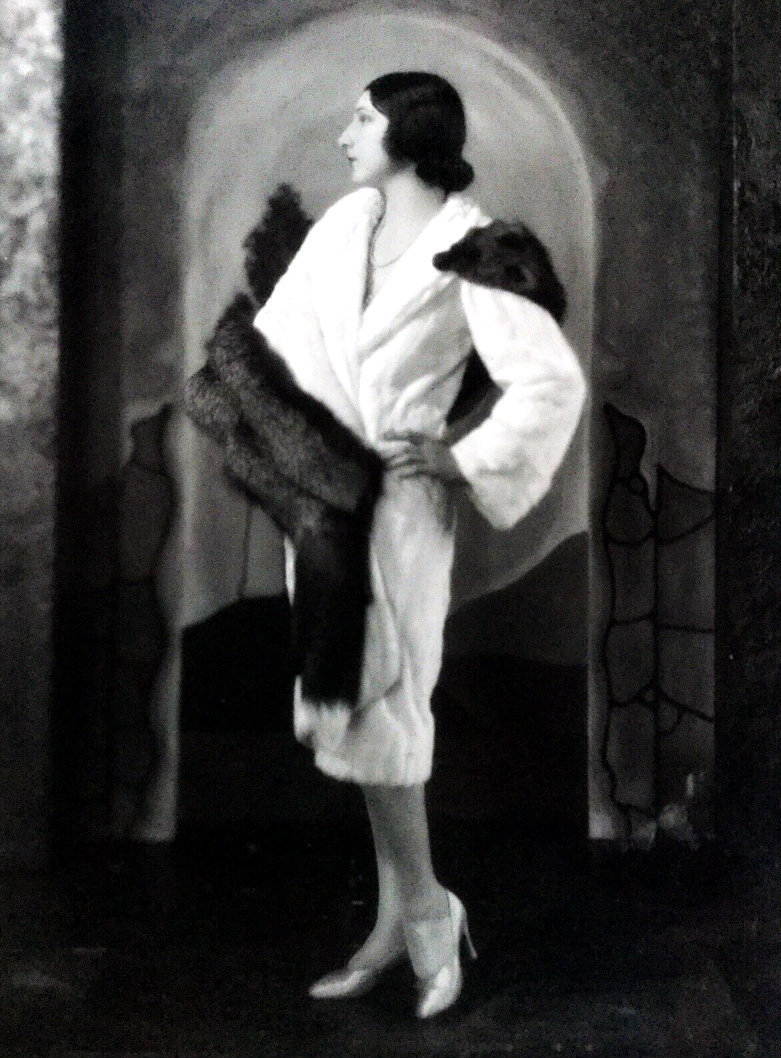Judith Anderson’s views about ‘pleasure-bored’ flappersJudith Anderson cuts a char
Judith Anderson’s views about ‘pleasure-bored’ flappersJudith Anderson cuts a characteristically elegant figure in this portrait from the premiere production of George Kelly’s Behold the Bridegroom (Broadway, 1927-8). The Museum of the City of New York has a production photo featuring Judith and two of her co-stars, John Marston and Thurston Hall.Judith portrayed a spoiled flapper, Antoinette Lyle, whose undoing proves to be the fact that she possesses every material thing and social advantage one could wish for and yet is entirely dissatisfied with life. Antoinette simultaneously has it all and is empty. Marriage risks becoming just another diversion. In the press, Judith spoke candidly - and sagely - about the poisoned chalice of privilege, particularly in relation to the 1920s social phenomenon of the flapper. She emphasised that she herself had escaped the curse of the ‘society butterfly’ to find fulfillment in her career (which, by now, was tremendously successful). I find Judith’s comments fascinating; they’re not only enlightening in relation to social history but also point to her good sense and acute self-awareness. It’s fortunate, she concludes, that her father lost his fortune. There’s no fate worse than wealth, it seems.‘The type of girl symbolized by Antoinette Lyle,’ in Behold the Bridegroom, says Judith Anderson, the play’s star, ‘is universal. I use the word in its purest meaning and I ought to know, for in the last year I have traveled far from the United States and back again. And on every continent, in every city and suburb, I meet the Antoinettes or the near Antoinettes. Not that I have ever known one who died either for self hate or for deep love, but I have known many who have reached the stage of utter boredom with life, complete dissatisfaction with themselves, and perfect understanding of the value of the years they have wasted.[…]‘The flapper in the United States has her prototype in Australia. Some time ago some one coined a name for the flapper’s big sister. I think it was “zipper”. They, too, exist in both continents. Rich and unrestrained, they dash through a youth full of pleasure only to approach their 30s blase and disillusioned and a trifle shopworn. When I was of the flapper age in Adelaide, my native town in Australia, I was brought up to be a society butterfly. Like the Lyles, we lived in a community considered smart for our part of the world. And many of the first families had daughters and sons who belonged to a fast set. They wanted to show the English visitors that the colonials weren’t dull and slow. Father was at one time a very wealthy man. He was called the “Silver King” of Australia. I was pampered and spoiled by him and his generosity, just as Mr. Lyle spoiled his daughter in the play. Were it not for a quiet, loving mother and her intelligent direction, I myself might have developed as Antoinette did under the limp disciplinary rod her father wielded.‘I doubt, however, if I were temperamentally inclined towards such a hectic existence as I lead in Behold the Bridegroom. But children of the rich are prone to develop into selfish adults with a rudeness often mistaken for wit. Fortunately, father lost his money, so we picked up our lares and penates and moved out of the wealthy pleasure-bored set to Sydney, where I started on my stage career.’- ‘Judith Anderson on Flappers’, The Brooklyn Daily Eagle, 11 March 1928 -- source link
#judith anderson#flapper#roaring twenties#flappers#20s fashion#1920s photography#1920s fashion#vintage#social butterfly#george kelly#broadway#theater#theatre#twenties#father#australia#adelaide#sydney#united states#good sense#self awareness#thurston hall#john marston
